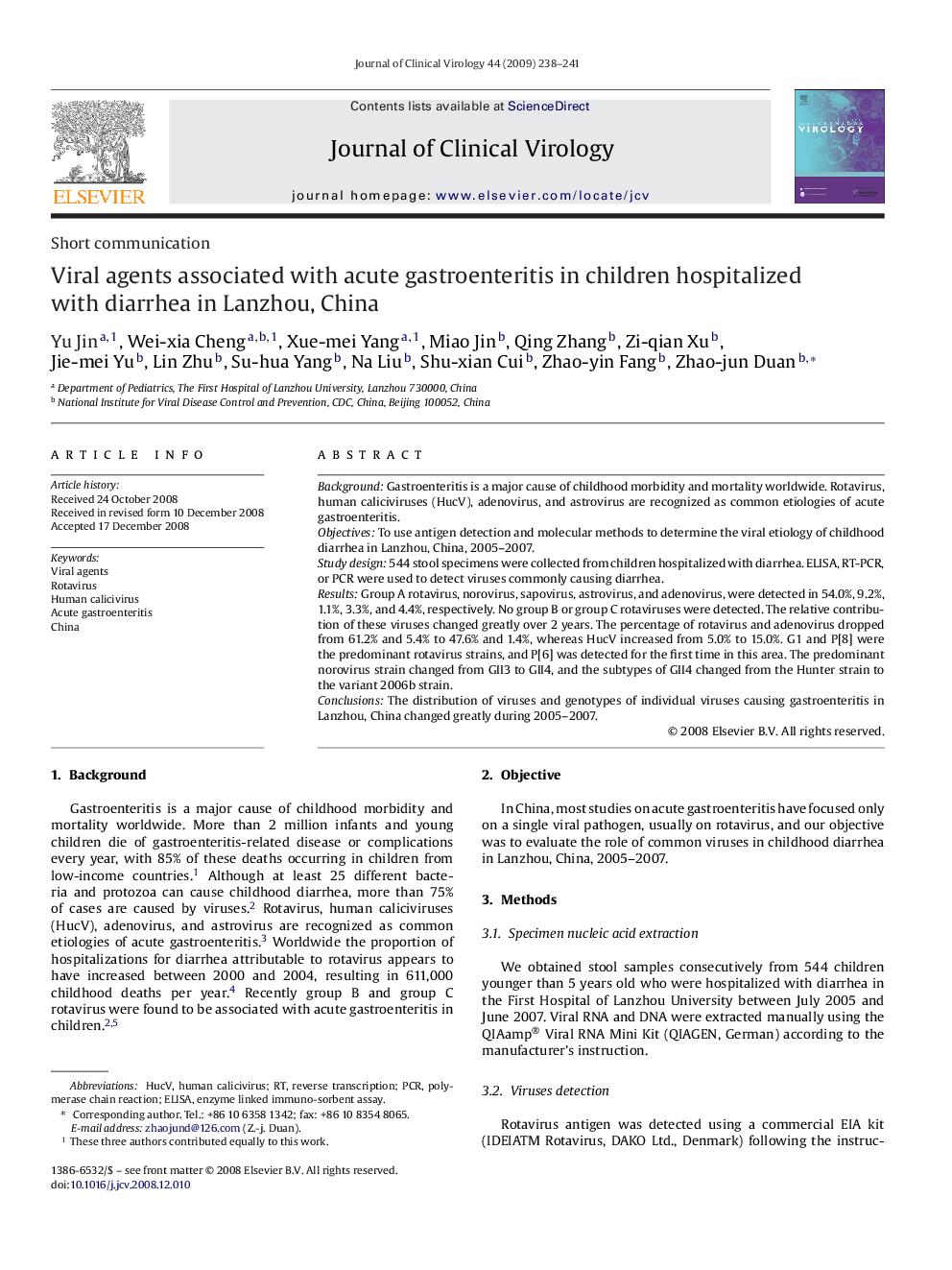| کد مقاله | کد نشریه | سال انتشار | مقاله انگلیسی | نسخه تمام متن |
|---|---|---|---|---|
| 3370577 | 1219079 | 2009 | 4 صفحه PDF | دانلود رایگان |

BackgroundGastroenteritis is a major cause of childhood morbidity and mortality worldwide. Rotavirus, human caliciviruses (HucV), adenovirus, and astrovirus are recognized as common etiologies of acute gastroenteritis.ObjectivesTo use antigen detection and molecular methods to determine the viral etiology of childhood diarrhea in Lanzhou, China, 2005–2007.Study design544 stool specimens were collected from children hospitalized with diarrhea. ELISA, RT-PCR, or PCR were used to detect viruses commonly causing diarrhea.ResultsGroup A rotavirus, norovirus, sapovirus, astrovirus, and adenovirus, were detected in 54.0%, 9.2%, 1.1%, 3.3%, and 4.4%, respectively. No group B or group C rotaviruses were detected. The relative contribution of these viruses changed greatly over 2 years. The percentage of rotavirus and adenovirus dropped from 61.2% and 5.4% to 47.6% and 1.4%, whereas HucV increased from 5.0% to 15.0%. G1 and P[8] were the predominant rotavirus strains, and P[6] was detected for the first time in this area. The predominant norovirus strain changed from GII3 to GII4, and the subtypes of GII4 changed from the Hunter strain to the variant 2006b strain.ConclusionsThe distribution of viruses and genotypes of individual viruses causing gastroenteritis in Lanzhou, China changed greatly during 2005–2007.
Journal: Journal of Clinical Virology - Volume 44, Issue 3, March 2009, Pages 238–241